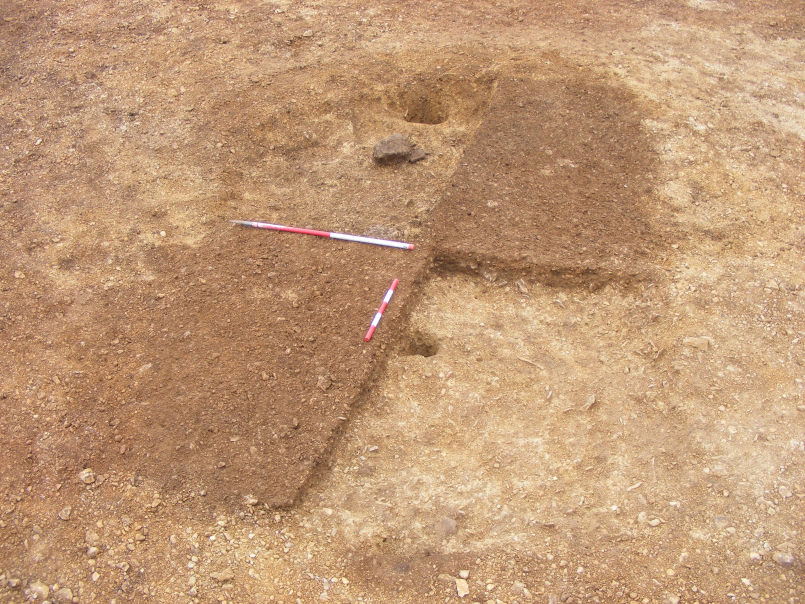
01 Jun A history of domestic appeal at Home Farm, Fairford
Choosing the right location for building your home has always been a key factor in the history of human settlement. This is as true now today as it was thousands of years ago although what we find desirable in a location has changed (being close to good schools vs having easy access to wood, water, etc). Some places are such a good spot that they have been occupied throughout human history. This is the case with some of the discoveries made by the Headland team during work at Home Farm, Fairford in 2013/14.
We were commissioned by the Environmental Dimension Partnership Ltd on behalf of Bloor Homes Ltd to undertake an open-area excavation at the site of the Fairford Gate housing development. Prior geophysical survey and trial trenching had revealed prehistoric and Anglo-Saxon remains which resulted in a condition to secure archaeological mitigation attached to planning permission.
The 4.75 ha site was excavated in two stages and identified three significant periods of archaeological activity:

Neolithic Burial
- Neolithic: A crouched inhumation burial of a female aged between 26 and 35 was found in a shallow pit. Osteological analysis identified that she suffered from osteoarthritis and malnutrition.
- Iron Age: linear ditches and pits from this period were found along with four burials, three human and one canine, that had been deliberately deposited within circular pits in a crouched or flexed position.
- Anglo-Saxon: Five potential sunken-floor buildings (pictured above) from which Anglo-Saxon pottery, bone, and daub were recovered. Environmental analysis suggests that the structures had a domestic function and the pottery suggested a date from around the 6th century that was confirmed by the radiocarbon dating of a seed.
The excavation results and analysis have been recently published in Transactions of the Bristol and Gloucestershire Archaeological Society Volume 135 under the title ‘Prehistoric Burials and Anglo-Saxon Settlement on Land at Home Farm, Fairford: Excavations in 2013 and 2014’.



